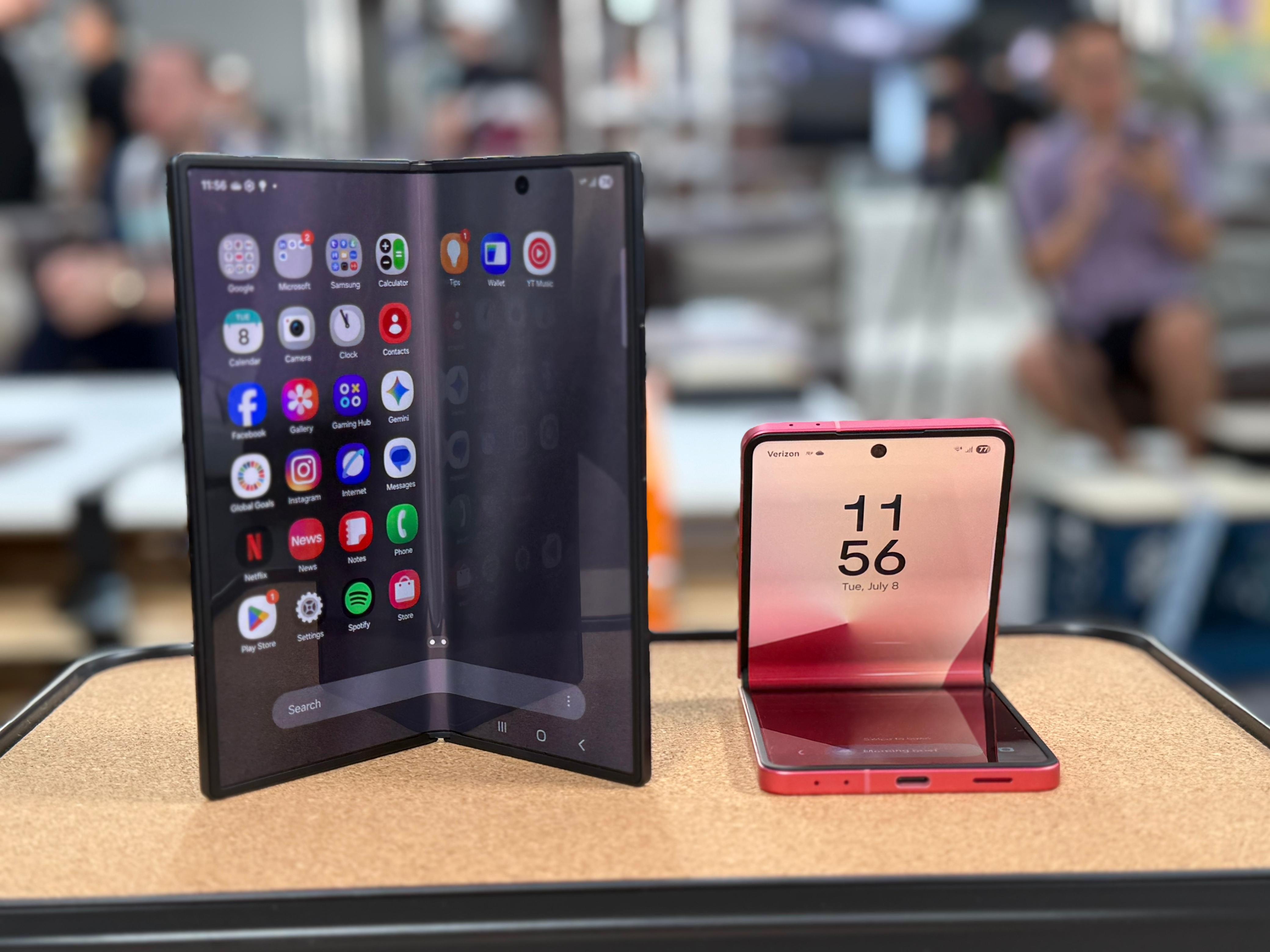Samsung’s foldable phones, with their large screens and artificial intelligence features, put the South Korean company in an advantageous position over competitors that do not offer foldable devices.
“Our focus is on display, so your AI must be visualised,” said J B Park, President and CEO, Samsung Southwest Asia, during a roundtable with select Indian journalists.
“Let’s say you make a verbal summary of your lecture, and then you make a PowerPoint, and then it shows on the display. The foldable, which is on a bigger display, can result in a bigger output, for productivity, for editing a video, or making content, or gaming. Anything bigger on screen, with AI, I think we have a better story or advantage.”
Specific design
For Park, the Galaxy Z Fold 7 and Flip 7, both foldable phones with larger displays, are better mobile devices for experiencing artificial intelligence features. Some of these features are specifically designed to take advantage of the foldables’ larger screens, something not possible on traditional bar-shaped phones.
 Samsung’s latest line of Foldable phones- Galaxy Z Fold 7 and Galaxy Z Flip 7 (Image: Anuj Bhatia/The Indian Express)
Samsung’s latest line of Foldable phones- Galaxy Z Fold 7 and Galaxy Z Flip 7 (Image: Anuj Bhatia/The Indian Express)
“Of course, you can have a voice that reads the text aloud, and that helps, but 90 per cent of AI output will be displayed visually. For example, when I take a selfie, I look 10 years younger. That’s visual, not reality,” said Park.
Foldable phones are still a young category and, admittedly, cater to a niche segment. However, Samsung’s seventh-generation foldables are blurring the line between novelty and practicality, putting a tablet-sized screen in your pocket with fewer compromises.
With the launch of the Galaxy Z Fold 7, the device aims to address some of the concerns consumers have had with foldables, featuring a new, slimmer design and a significant camera upgrade.
Story continues below this ad
Small form factor
The Galaxy Z Flip 7, meanwhile, sticks to the flip form factor but adds a bigger internal screen. Both devices have a refreshed OneUI 8 and are designed to take advantage of AI features, including Google’s new Gemini Live, which runs on the Flip 7’s cover screen.
“The concept of folding is to make something smaller. I remember when we had a 5-inch smartphone, we thought it was the biggest, immersive. Now, it’s like 6.8-inch and it’s becoming bigger and bigger… it doesn’t go into your pocket, it’s hard to hold,” Park explained why Samsung is selling foldable phones on the market.
“We started thinking about how we can make it a small form factor. That’s when we flipped it or folded it. I think it’s a trend that other brands are following.”
The initial reception for Samsung’s foldables has been strong in markets like the US and India.
Story continues below this ad
In international markets, the Galaxy Z Fold 7, which starts at Rs 174,999, received the most preorders ever for the book-style foldable phone. The Z Flip 7, which opens up like a flip phone, is also outperforming its predecessor.
This may suggest that the combination of hardware, software, and AI could boost consumer interest in foldable phones and help justify their high price.
It puts Samsung in a stronger position, as its biggest rival in the high-end segment, Apple, still doesn’t have a foldable range, though it continues to develop one internally, with a launch expected next year.
The Galaxy Z Fold 7, Flip 7, and the more affordable Flip 7 FE are being manufactured in India, with a significant portion of the development work carried out at Samsung’s R&D facility in Bengaluru.

